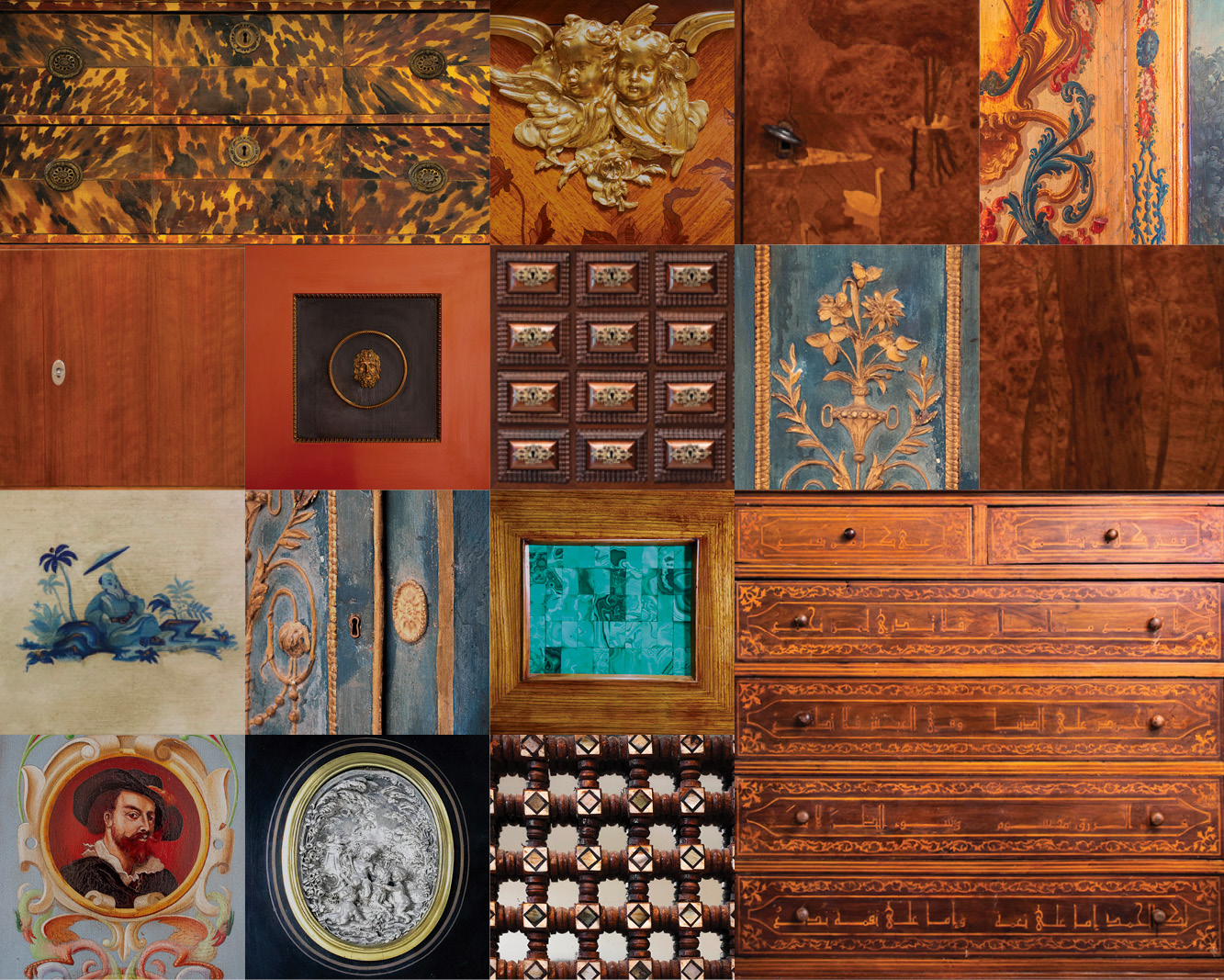History of Furniture: Cabinets

Our ancestors stored their supplies in the recesses of caves or hollow trees. Then they began to gouge out the wood - this is how the box appeared. The drawer and lid are almost a cupboard.
In ancient Rome, there were recesses in the wall for storing weapons - armariums, later they had doors and shelves.
Image Source: upload.wikimedia.org. The lid of a marble sarcophagus, c. 200 CE, in the garden of Villa Balestra in Rome.
The earliest image of armarium is on the lid of a marble sarcophagus in Rome’s Villa Balestra garden. This was identified about the year 200 CE. A seated figure of a man, with a cabinet with open doors stands in front of him. It is equipped with two shelves, on the next shelf is what appears to be a dish or shallow cup.
During the Renaissance, coffers or chests were a popular piece of furniture due to their functionality: apart from storing, low chests were often used as seating, and taller chests served as side tables. An antique chest or coffer was used to safely store textiles, food, and valuable objects. Some chests feature locking mechanisms or a metal band on which a lock may be fastened.
Chests were a family relic in some Slavic cultures, particularly in peasant households, and were a traditional bride’s dowry.
In Holland, a chest placed on its side finally becomes a wardrobe.
Cabinets are large pieces of furniture that serve as storage and are accessed through doors and little drawers. Early cabinetry was primarily used to store documents and stationery. Other cabinet uses emerged considerably later, as their popularity rose. This expansion of cabinet applications is supposed to have fueled an industry revolution.
Preparatory drawings for The Gentleman
and Cabinet- Maker’s
Director, published variously in the editions of 1754, 1755
(unchanged), and 1762 (revised),
Thomas Chippendale. Metropolitan Museum of Art, New York
Before the era of industrial design, cabinet makers were in charge of both the design and manufacture of each piece of furniture. Most famous artisans of the 18th century: Thomas Sheraton, Thomas Chippendale, and George Hepplewhite, saved their names in the history of interior design, not only for excellent craftsmanship but also for published books of furniture forms.
Depending on the style and provenance, the surface of the cabinet could be decorated with hand paintings, marble or malachite panels, and precious inlays.
Over time, only the materials have changed. The early ideas and techniques may be found in practically every piece of cabinetry today. But what can be better than a piece of furniture with character and history, made from solid wood, and decorated with an exquisite taste?
To find a perfect cabinet, visit Cabinet of Curiosity 'Storage' section.














